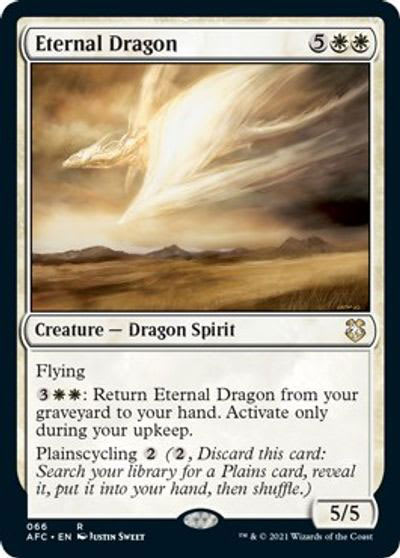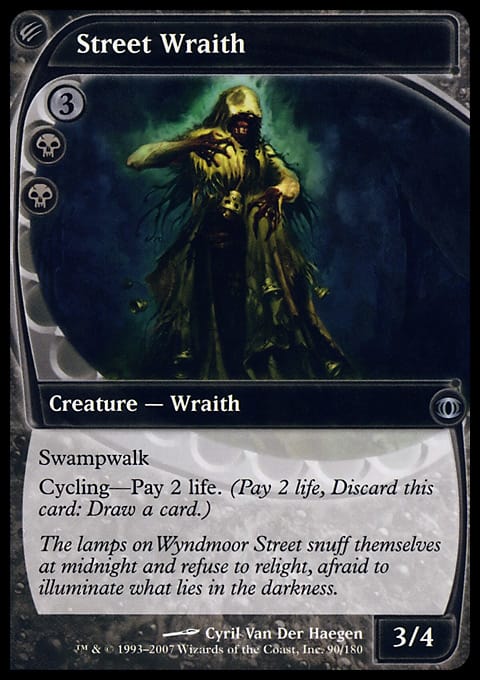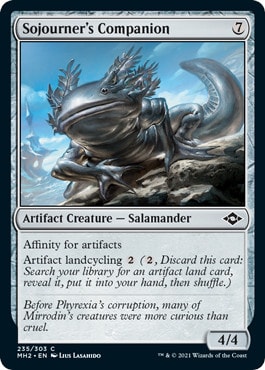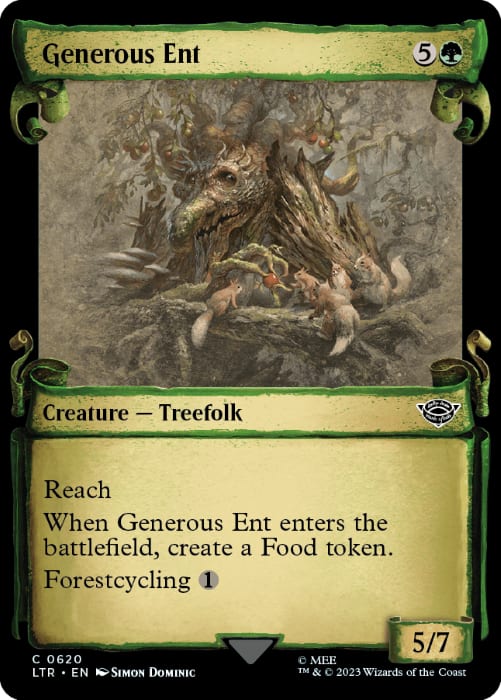Stop me if you've heard this one before. You're playing an intense game of Magic, with you and your opponent going tit for tat for a couple dozen turns already. One timely topdeck on either side of the battlefield can make or break this game. You begin your next turn: untap, upkeep, cross your fingers and draw a card hoping to see a meaningful spell, and...
It's a land. Again. Game over. Or is it?
The Cycling Mechanic
The reality is, it depends on which land you drew! Some lands have a relevant ability that can impact the battlefield. Others may only tap for mana, but also include the cycling keyword.
What is cycling? Since its inception in Urza's Saga, cycling is an ability on a card that allows you to pay a small cost to discard the card in order to obtain a new one. Usually, that new card comes in the form of drawing off the top of your deck, but there are other variations on the mechanic. From my story above, if the land you drew was a Drifting Meadow, one of the first cards printed with the cycling ability, you could pay two mana to discard the land and try your luck at another draw.
Here are a few more details regarding the official rules about cycling:
- You can cycle a card while it's in your hand; it is an activated ability.
- Cycling functions as a discard, so you'll trigger cards like Currency Converter
- A card with cycling continues to have an activated ability while on the battlefield, even though you can only cycle from your hand. This is relevant for cards like Zirda, the Dawnwaker.
Cycling was a brilliant invention by Wizards of the Coast because it helps smoothen out potentially bumpy draws. Too many lands? A cycling land, such as one of the Triomes from Ikoria, gives you an option of a re-draw. Missing land drops? Expensive cards with cycling can still be useful by offering you another chance at topdecking a land.
Cycling isn't completely "free" - usually a card with cycling is slightly worse relative to a comparable card without the cycling keyword. The cycle of cycling lands from Urza's Saga, for example, come into play tapped and offer no land types in exchange for the flexibility offered by the keyword. This balance makes it favorable to run some cards with the cycling ability, but not an entire deck of said cards.
Cycling with a Twist
Scourge introduced a different flavor of cycling. Rather than discarding the card to draw a new one, you could cycle away a new set of cards in order to search your library for something specific.
For example, Shoreline Ranger has the ability "Islandcycling," which allows you to pay ![]() mana and discard the creature to search your library for an Island card and place it into your hand. It effectively acts like an instant speed, uncounterable tutor for that specific card type. Eternal Dragon had a Planescycling ability, and was a highly impactful card in Constructed play back in the day.
mana and discard the creature to search your library for an Island card and place it into your hand. It effectively acts like an instant speed, uncounterable tutor for that specific card type. Eternal Dragon had a Planescycling ability, and was a highly impactful card in Constructed play back in the day.
Three other cards rounded out this cycle: Twisted Abomination had Swampcycling, Chartooth Cougar had Mountaincycling, and Elvish Aberration had Forestcycling.
Future Sight came along and complicated things even further (as Future Sight is prone to do). This set introduced a new type of cycling, allowing players to discard a card to search their library for a card with a specific creature type! This kind of ability is quite powerful, and it's a relief that the effect was only included on two cards from the set: Vedalken Aethermage (wizard) and Homing Sliver (sliver).
More flexibility was introduced with Valley Rannet, from Alara Reborn. This creature isn't too impressive for its rate (a 6/3 for six mana is worse than your standard Craw Wurm) but it comes along with two cycling abilities: Mountaincycling and Forestcycling. You can search up whichever one you need more (or both, if you seek a card like Taiga or Stomping Ground).
For a brief moment, Wizards of the Coast explored alternative cycling costs. Consider Street Wraith and Edge of Autumn, two more cycling cards from Future Sight.
Both of these cards simply draw you a card, like the original cycling keyword of Urza's Saga. The cost, however, isn't a payment of mana! Instead, Street Wraith requires a payment of two life and Edge of Autumn a land sacrifice. Wizards of the Coast has since moved away from cycling costs that don't require mana because of their potential power level.
Lastly, another twist was added in Modern Horizons 2, where Sojourner's Companion was printed with an Artifact Landcycling ability.
Basic Landcycling
One of the most common forms of cycling is known as Basic Landcycling. As the name suggests, this ability allows you to discard the card in order to search your deck for a Basic Land. This offers full color flexibility, as you're able to search up any of the six basics (don't forget, you can fetch a Wastes). However, with this ability you're unable to find nonbasic lands with land types, so no Surveil Lands or Dual Lands.
Basic Landcycling was first introduced in Conflux. Initially, the ability was only reprinted in supplemental products, such as Commander 2016, Modern Horizons 2, and Doctor Who. Then, with the release of Murders at Karlov Manor earlier this year, the Basic Landcycling mechanic officially became deciduous. In other words, the Basic Landcycling mechanic aren't evergreen, but will occasionally show up in a set that needs it (other deciduous keywords include Affinity, Curses, Kicker, Prowess, Surveil, etc.).
Basic Landcycling, along with other variations on Landcycling, are regarded positively by the player base as it allows more flexibility with deck-building, particularly in Limited. One of the worst experiences in Magic is drawing too many or tew few lands, and Landcycling helps ameliorate the manascrew/flood phenomenon. It's no surprise Wizards of the Coast has found ways to include cards with this mechanic more frequently in recent sets.
Popular Cards with Cycling
According to the Magic Wiki page, there are 264 cycling cards in the game. Because of the popularity of this ability, cycling has been featured in more blocks than any other non-evergreen mechanic. I won't go through every card here, but below are a few recognizable cards with cycling:
- Street Wraith (mentioned above)
- The Landcyling cycle from The Lord of the Rings (e.g., Troll of Khazad-dum)
- Ash Barrens
- Censor
- Decree of Justice (part of a cycle of Decree cards)
- Eternal Dragon
- Flame Jet
- Flourishing Fox
- Hollow One
- Triome Lands (e.g., Indatha Triome)
- Miscalculation
- Shark Typhoon
- Timeless Dragon
- Unearth
- Yidaro, Wandering Monster
The list goes on and on - the reality is, there are a dozens of cards with cycling that have had an impact on Constructed formats over the years. I highlighted just a couple above, but now that the keyword is deciduous, you can bet the list will grow as more sets are released.
Wrapping It Up
It's amazing to consider how cycling, a classic ability that was first thought of by Richard Garfield himself while designing Tempest, has evolved to become a mainstay, deciduous keyword in modern day Magic. It's truly a testament to the creativity and brilliance of Magic's creator.
The future is bright when it comes to cycling. Players appreciate the resilience of the ability and how it streamlines their draws just a little bit. Additionally, Wizards of the Coast has a lot of potential space for exploration when it comes to cycling. For example, they began adding additional triggers to cycling cards. For example, Void Beckoner draws you a card and gives you an instant-speed, uncounterable deathtouch counter to place on a creature when you cycle it. With add-ons like these, the possibilities are endless.































